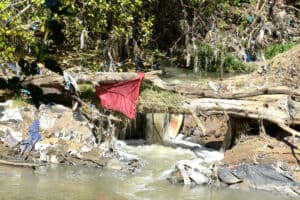Doubts remain whether the maintenance and upgrades will ease the City’s crisis.

Johannesburg’s biggest planned water cut – set to see taps dry up for two days next week – was postponed at the last minute on Thursday by Rand Water … but it will go ahead sometime in the future.
However, it is still unclear whether the two-day shutdown for major maintenance and upgrades will actually do anything to reduce the risk of major water shortages.
A power outage at City Power’s Orlando Power station last week affected the water entity’s infrastructure resulting in water supply challenge.
According to DA Gauteng spokesperson on infrastructure development Nico De Jager, bulk supplier Rand Water had not made provision for generators at its main pumping stations and had also allowed its electrical infrastructure to degrade.
“The moment the electricity goes down and there’s no electricity, not even a generator, the purification plants also cannot distribute water. This then impacts severely on large areas in the city,” he said.
“Rand Water has to come to the party because they know there is a challenge around load shedding and power supply.”
De Jager said the issue was that over the years, Rand Water, as well as Joburg Water, did not maintain the electrical infrastructure at the respective reservoirs.
“Electricity’s needed to pump water … and they did not maintain that infrastructure. And now this is the drama we are sitting with – the collapse of that infrastructure then impacting on the ability to [provide] water,” he said.
Yet, the looming two-day dry spell did not appear to have anything to do with electrical problems.
This means that, in the event of increased load shedding or a catastrophic event like the Orlando fire, water will again disappear from many areas, as happened earlier this year at the height of load shedding.
When the planned shutdown finally does take place, Joburg Water said more of its customers would be affected by the planned shutdown.
It said the purpose of the planned shutdown was to complete a tie-in between the A19 and B14 lines with a new pipeline, installation of isolation valves, and systems upgrades at Rand Water’s Eikenhof pump station.
A statement from Rand Water referred to previous water shortages occasioned by electrical problems.
Rand Water spokesperson Makenosi Maroo said it had experienced a power failure at the Palmiet booster pumping station on Tuesday.
She said Eskom technicians were called to the site to attend to the fault although it was attended to after a few hours and power had been restored.
Maroo added that the water distribution system would “take time to recover” and that this had been communicated to customers.
She did not comment on the planned water outage.
In its statement, Joburg Water said that the following Rand Water reservoirs would be affected:
- Waterval 1 and 2
- Weltevreden
- Roodepoort
- Meredale 1 and 2
“During the Rand Water shutdown, Johannesburg Water infrastructure supplied by the pump station will be affected by no water supply. It is estimated that full recovery of the systems may take approximately five days or longer after supply has been fully restored,” it stated.
“All areas receiving direct water supply from Rand Water will also be impacted by the shutdown.
Johannesburg Water will make arrangements for alternative water supply at strategic areas like hospitals, clinics, schools, municipal offices, police stations and shopping centres.”
De Jager said some areas like Roodeport and large parts of Bryanston, Houghton and Norwood had prolonged water outages and continuous outages over the past couple of weeks as a result of old asbestos pipes.
He said with time, these pipes become brittle and are more likely to experience bursts.
“These bursts generally happen at night. During the day, we all use a lot of water so the pressure in the pipes from the Joburg Water reservoir to the residents is quite low or reduces as water flows out of the system,” he said.
“But between 10 o’clock at night and five o’clock in the morning, there are far fewer people using water, so there is a buildup in those pipes while pressure is very high. When this build-up happens, that is when you have a burst happening.
“What Joburg needs to do is to start implementing pressure demand management, which is a system where they control the outflow of water from the reservoirs.
“You reduce pressure during off-peak times so that the old asbestos pipes are not under so much strain, which is currently happening.
“Even though the pipes are old, a burst can be prevented by simply putting and controlling the pressure in the pipes.”
De Jager added that municipalities needed a system to upgrade the old infrastructure.
“In some cases, you need more reservoirs, but the problem is not the reservoirs as much as the old asbestos pipelines. It’s safe to say we lose about 40% of all the water Rand Water provides. We lose this as a result of leaking pipes and technical failure,” he said.






